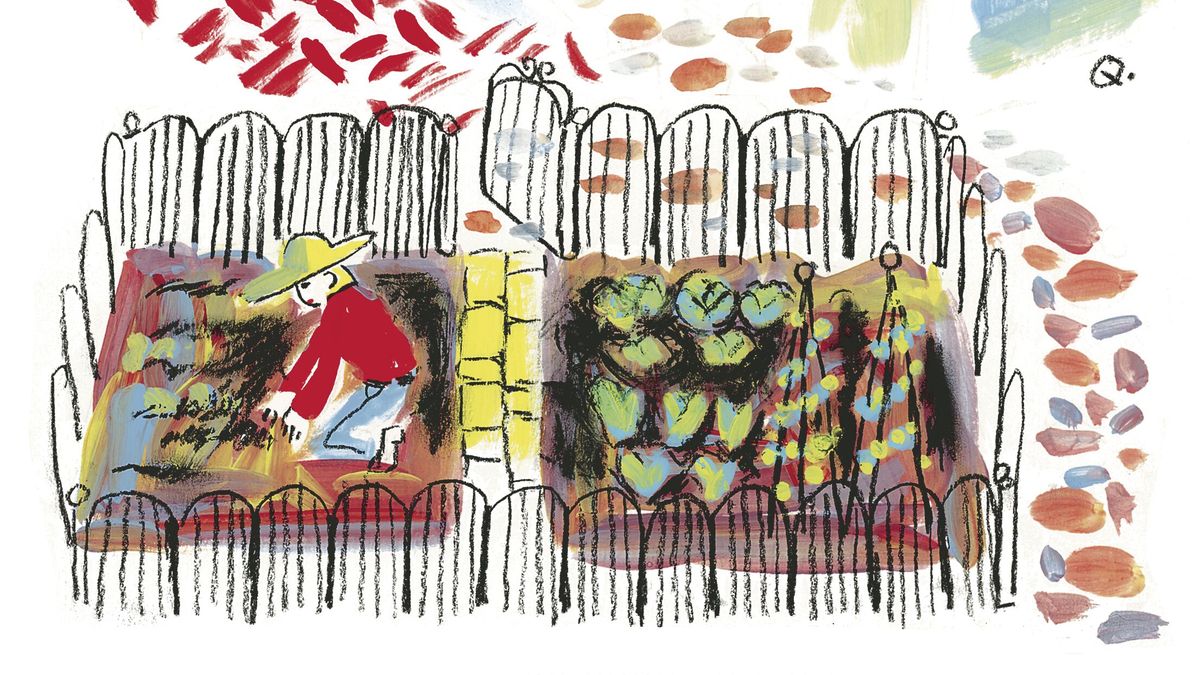City plots: Urban gardening grows with tips to add accessible greens

You don’t need a big patch of dirt to grow fresh veggies and herbs for the table. Using plant containers on rooftops, patios and balconies can mean fresh produce just steps from the kitchen.
Urban gardens are growing in popularity among people with small yards and those who live in apartments and condos. Another reason can be just the convenience regardless of lot size. Spokane Master Gardener Marilyn Lloyd has taught often on the topic because of frequent requests in recent years.
This month, she is scheduled to teach about container gardening in three free library sessions. Several years ago, Lloyd started experimenting with growing vegetables in large pots next to her yard’s raised beds, with a goal eventually to move containers closer to her back door.
“What I learned along the way is, hey, you can put these containers anywhere – on a back step, a balcony, a patio,” she said. “But, I include when talking with people to be careful about watering. From photographs, I’ve seen that some people have ruined their decks by not having them protected, and water dripped out.”
Lloyd suggests people add drip pans under containers, or she’s even seen a small kid pool used for setting pots in as a source of water and to protect decks. The soil in containers will dry out quicker than soil in a garden.
Susan Mulvihill, garden columnist for The Spokesman-Review, recently wrote that many garden centers sell self-watering containers that have a water reservoir below the growing area. With that, the potting soil wicks the water up to the roots for consistently moist soil.
If self-watering, you might need to check soil moisture regularly based on the needs of certain plants – or perhaps use a drip system, Lloyd said. During hot summer days, many plants grown in pots must be watered as often as twice a day. But watch that the water doesn’t flow out of pots onto surfaces that can be harmed, such as wooden decks, or drip onto a neighbor’s balcony.
You can usually find container growing instructions on seed packets or online for specific plants. Good container plants include lettuce varieties, spinach, kale, herbs, peppers and certain tomatoes. Under the right conditions, some squash plants and other veggies can do fine. Lloyd said people have had success adapting large containers to grow zucchinis, but that didn’t work well for her.
You also can look for dwarf plants at garden centers that might be ideal for containers. Lloyd has had success with a dwarf eggplant in a container, and she has grown enough snow peas for regular salads in an elongated container.
Here are other ideas from Lloyd:
Containers. Go big on a pot to retain moisture and allow healthy root growth, Lloyd said. But you should look for ones that aren’t too heavy in case you need to move them, or weight is a consideration on a balcony. Lloyd said she looks for large plastic ones or those made with lightweight composted materials, often sold by large retailers. Fabric “cloth bags” for growing also are gaining in popularity.
Lloyd usually uses at least a 5-gallon container per plant, although pepper plants, lettuce and herbs can do well in smaller pots. Bigger is better for tomatoes.
“Tomatoes take a large container anyway because at the end of the season, the whole thing is full of roots,” she said. “They have tremendous root systems. Lettuce just needs a shallow container because they don’t have a lot of big roots.”
Again, water is part of the equation. “The smaller the pot, the faster it will dry out on you.”
Soil. You should use good-quality potting soil, Lloyd said. Spokane’s native dirt is typically clay soil, or too heavy, which doesn’t drain well. Look for a “soilless” potting mix that’s formulated for use in containers. It will be quick-draining, lightweight and a good composition for vegetables and ornamentals, she said.
Sunlight. People need to think about the location of containers and the amount of sun they’d get – usually requiring six to eight hours. Make sure that trees on a property aren’t shading too much unless the variety needs less sun. Vegetables that handle some shade include beets, broccoli, chard, kale, lettuce and spinach.
Support. Tomatoes, even in containers, benefit from a tomato cage or stake. Some cherry tomatoes can grow quite tall, going until it freezes, Lloyd said. If you’re experimenting with something that vines and needs space, there are some tricks to vertical gardening and trellises and even containers designed for that benefit.
Seed starting. Urban gardens can start either with your own seeds, and seedlings grown inside under a grow light, or buying starters at local stores. Most Spokane gardeners don’t plant outside until later in May or when snow is off Mica Peak unless they’re cultivating cold-weather plants.
Fertilizing. Lloyd teaches about fertilizing, which differs again depending on plant type. “Tomatoes don’t want too much nitrogen. Generally, ratios for tomatoes and peppers is five nitrogen, 10 phosphorus and 10 potassium, so 5:10:10, but lettuces, I use 10:10:10, all elements equal.”
Get educated. Both Spokane County Master Gardeners and garden centers can offer more tips. Master Gardeners teach sessions at libraries for free, offer handouts and do classes for a small fee at 222 N. Havana St. For general plant questions, call Master Gardeners at (509) 477-2181.